Volume 11 | Number 2 | November 2022
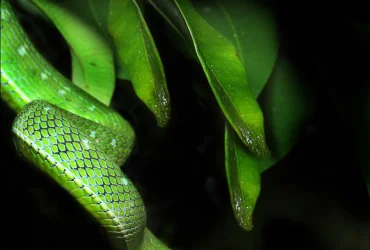 v11i2.288
v11i2.288ISSN: 1800-427X (printed)
eISSN: 1800-427X (online)
DOI:10.47605/tapro.v11i2.288
Submitted date: 9 March 2022
Accepted date: 29 October 2022
Published date: 22 November 2022
Pp. 103–106, Pl. 33.
Nest fidelity of purple sunbird (Cinnyris asiaticus) on communal webs of a spider
P. Selvaraj* & S. Kamalanathan
*Corresponding author. E-mail: prachemist@gmail.com
Nest predation is a major cause of avian breeding failure and parent birds adopt various anti-nest predation strategies to increase the survival rate of offspring. Purple sunbird uses snake moults as nest-building material, which could be a tactic to avoid predation of eggs and hatchlings inside the nest.
Section Editor: Sumudu Fernando
eISSN: 1800-427X (online)
DOI:10.47605/tapro.v11i2.288
Submitted date: 9 March 2022
Accepted date: 29 October 2022
Published date: 22 November 2022
Pp. 103–106, Pl. 33.
Nest fidelity of purple sunbird (Cinnyris asiaticus) on communal webs of a spider
P. Selvaraj* & S. Kamalanathan
*Corresponding author. E-mail: prachemist@gmail.com
Nest predation is a major cause of avian breeding failure and parent birds adopt various anti-nest predation strategies to increase the survival rate of offspring. Purple sunbird uses snake moults as nest-building material, which could be a tactic to avoid predation of eggs and hatchlings inside the nest.
Section Editor: Sumudu Fernando
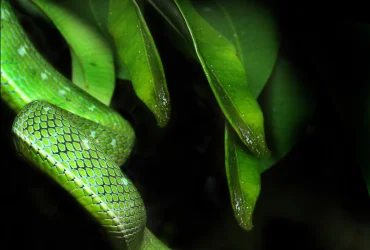 v11i2.287
v11i2.287ISSN: 1800-427X (printed)
eISSN: 1800-427X (online)
DOI:10.47605/tapro.v11i2.287
Submitted date: 16 March 2022
Accepted date: 29 October 2022
Published date: 22 November 2022
Pp. 99–102, Pl. 32.
The herpetofauna in Sarpang District, Bhutan
J. Tenzin*, S. Nidup, G. Gyeltsen, T. Tshomo, A. Nepal & J.T. Wangyal
*Corresponding author. E-mail: jigmetenzin16@gmail.com
Although several checklists exist of herpetofauna in Bhutan, these are based on citizen science data or report the diversity of individual regions and published records are lacking for many areas. Like the country as a whole, there is no formal checklist or report for Sarpang District despite the fact that most of this district is encompassed within three protected areas namely Royal Manas National Park, Jigme Singye Wangchuck National Park, and Phibsoo Wildlife Sanctuary.
Section Editor: Sanjaya K. Bandara
eISSN: 1800-427X (online)
DOI:10.47605/tapro.v11i2.287
Submitted date: 16 March 2022
Accepted date: 29 October 2022
Published date: 22 November 2022
Pp. 99–102, Pl. 32.
The herpetofauna in Sarpang District, Bhutan
J. Tenzin*, S. Nidup, G. Gyeltsen, T. Tshomo, A. Nepal & J.T. Wangyal
*Corresponding author. E-mail: jigmetenzin16@gmail.com
Although several checklists exist of herpetofauna in Bhutan, these are based on citizen science data or report the diversity of individual regions and published records are lacking for many areas. Like the country as a whole, there is no formal checklist or report for Sarpang District despite the fact that most of this district is encompassed within three protected areas namely Royal Manas National Park, Jigme Singye Wangchuck National Park, and Phibsoo Wildlife Sanctuary.
Section Editor: Sanjaya K. Bandara
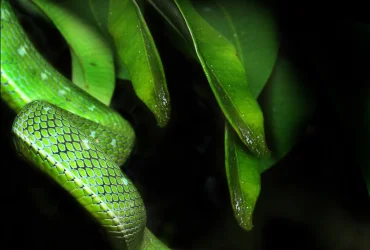 v11i2.286
v11i2.286ISSN: 1800-427X (printed)
eISSN: 1800-427X (online)
DOI:10.47605/tapro.v11i2.286
Submitted date: 9 March 2022
Accepted date: 29 October 2022
Published date: 22 November 2022
Pp. 97–98.
First record of spottedsail barb (Pethia phutunio) from Maharashtra, India
G.A. Shinde*, B.S. Devare & K.R. Tayade
*Corresponding author. E-mail: gauravshinde22@gmail.com
Fishes of the cyprinid genus Pethia are diagnosed from other cyprinid genera by a suite of characters that includes small adult size (usually less than 50 mm standard length (SL), exceptionally up to 80 mm SL), absence of rostral barbels, absence or rudimentary maxillary barbels, last unbranched dorsal-fin ray stiff and serrated, 3 to 4 unbranched and 8 branched dorsal-fin rays, 3 unbranched and 5 branched anal-fin rays, lateral line complete, interrupted or incomplete with 19–24 scales in lateral series, and a unique color pattern consisting of a humeral spot, a black blotch on the caudal peduncle, and in some species, black blotches, spots or bars on the body. Pethia are distributed throughout South and Southeast Asia, from Sri Lanka and peninsular India in the west, to Myanmar in the east.
Section Editor: Upali S. Amarasinghe
eISSN: 1800-427X (online)
DOI:10.47605/tapro.v11i2.286
Submitted date: 9 March 2022
Accepted date: 29 October 2022
Published date: 22 November 2022
Pp. 97–98.
First record of spottedsail barb (Pethia phutunio) from Maharashtra, India
G.A. Shinde*, B.S. Devare & K.R. Tayade
*Corresponding author. E-mail: gauravshinde22@gmail.com
Fishes of the cyprinid genus Pethia are diagnosed from other cyprinid genera by a suite of characters that includes small adult size (usually less than 50 mm standard length (SL), exceptionally up to 80 mm SL), absence of rostral barbels, absence or rudimentary maxillary barbels, last unbranched dorsal-fin ray stiff and serrated, 3 to 4 unbranched and 8 branched dorsal-fin rays, 3 unbranched and 5 branched anal-fin rays, lateral line complete, interrupted or incomplete with 19–24 scales in lateral series, and a unique color pattern consisting of a humeral spot, a black blotch on the caudal peduncle, and in some species, black blotches, spots or bars on the body. Pethia are distributed throughout South and Southeast Asia, from Sri Lanka and peninsular India in the west, to Myanmar in the east.
Section Editor: Upali S. Amarasinghe
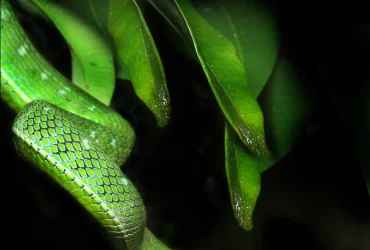 v11i2.285
v11i2.285ISSN: 1800-427X (printed)
eISSN: 1800-427X (online)
DOI:10.47605/tapro.v11i2.285
Submitted date: 14 May 2022
Accepted date: 29 October 2022
Published date: 22 November 2022
Pp. 94–96, Pl. 31.
Migration of crimson rose butterfly (Pachliopta hector) from India to Sri Lanka
P.K. Dissanayake*, P. Vinod, S. Vinod, H.S.B. Wijesinghe, R.W.D.L Kumara, H.M.D.S. Subhashana & R. Gamage
*Corresponding author. E-mail: kapila@agri.sab.ac.lk
Migrations of butterflies are common phenomena, yet they are one of the greatest natural events on earth. The migration of monarch butterflies, Danaus plexippus (L.) is a spectacular event that has received great attention in northern America. They travel 1,200–2,800 miles from the northeast United States and southeast Canada to the mountain forests of central Mexico, where they find suitable climatic conditions to hibernate from the beginning of November to mid-March. This swarming occurs primarily across North American land mass, so does not cross the sea. Although migration appears to be widespread among butterflies, its prevalence, and migration behaviours, are poorly understood.
Section Editor: Himesh D. Jayasinghe
eISSN: 1800-427X (online)
DOI:10.47605/tapro.v11i2.285
Submitted date: 14 May 2022
Accepted date: 29 October 2022
Published date: 22 November 2022
Pp. 94–96, Pl. 31.
Migration of crimson rose butterfly (Pachliopta hector) from India to Sri Lanka
P.K. Dissanayake*, P. Vinod, S. Vinod, H.S.B. Wijesinghe, R.W.D.L Kumara, H.M.D.S. Subhashana & R. Gamage
*Corresponding author. E-mail: kapila@agri.sab.ac.lk
Migrations of butterflies are common phenomena, yet they are one of the greatest natural events on earth. The migration of monarch butterflies, Danaus plexippus (L.) is a spectacular event that has received great attention in northern America. They travel 1,200–2,800 miles from the northeast United States and southeast Canada to the mountain forests of central Mexico, where they find suitable climatic conditions to hibernate from the beginning of November to mid-March. This swarming occurs primarily across North American land mass, so does not cross the sea. Although migration appears to be widespread among butterflies, its prevalence, and migration behaviours, are poorly understood.
Section Editor: Himesh D. Jayasinghe
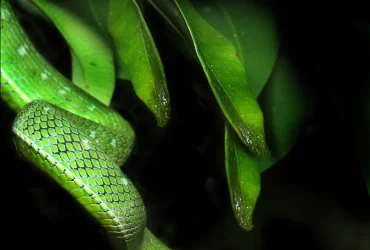 v11i2.284
v11i2.284ISSN: 1800-427X (printed)
eISSN: 1800-427X (online)
DOI:10.47605/tapro.v11i2.284
Submitted date: 30 May 2022
Accepted date: 25 October 2022
Published date: 22 November 2022
Pp. 84–93, pls. 23–30.
THE SNAKE FAUNA OF LAOS WITH NEW PROVINCIAL RECORDS
Nathanaël Maury, Patrick David* & Somchit Sudavanh
*Corresponding author. E-mail: patrick.david@mnhn.fr
Abstract
We add seventeen new provincial records for fifteen snake species of Laos with precise localities and elevations. These new records result from 45 independent surveys conducted at different times between the years 2016 and 2021 in all Laotian provinces except Attapu. In all field trips, we took a series of photographs that allowed us to prepare high-resolution photographic plates that then allowed us to identify all individuals down to species level. No specimen was killed and preserved. Here we provide the list of all new localities of snakes photographed during our surveys. We discuss potential systematic problems and the biogeographic implications of these new provincial records.
Key words : Distribution, Indochinese Region, geography, Southeast Asia, Sundaland, taxonomy
Section Editor: Thasun Amarasinghe
eISSN: 1800-427X (online)
DOI:10.47605/tapro.v11i2.284
Submitted date: 30 May 2022
Accepted date: 25 October 2022
Published date: 22 November 2022
Pp. 84–93, pls. 23–30.
THE SNAKE FAUNA OF LAOS WITH NEW PROVINCIAL RECORDS
Nathanaël Maury, Patrick David* & Somchit Sudavanh
*Corresponding author. E-mail: patrick.david@mnhn.fr
Abstract
We add seventeen new provincial records for fifteen snake species of Laos with precise localities and elevations. These new records result from 45 independent surveys conducted at different times between the years 2016 and 2021 in all Laotian provinces except Attapu. In all field trips, we took a series of photographs that allowed us to prepare high-resolution photographic plates that then allowed us to identify all individuals down to species level. No specimen was killed and preserved. Here we provide the list of all new localities of snakes photographed during our surveys. We discuss potential systematic problems and the biogeographic implications of these new provincial records.
Key words : Distribution, Indochinese Region, geography, Southeast Asia, Sundaland, taxonomy
Section Editor: Thasun Amarasinghe
Hubungi Kami
The ultimate aim of the journal is to provide an effective medium for communication of the latest and best scientific information.
Copyright © 2020 Taprobanica. All Rights Reserved
Jasa Pembuatan Website by IKT




